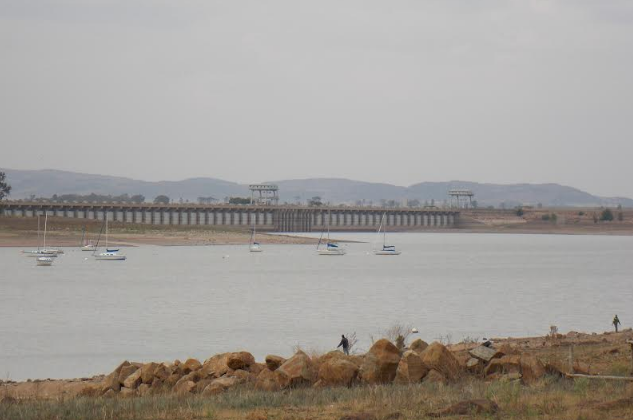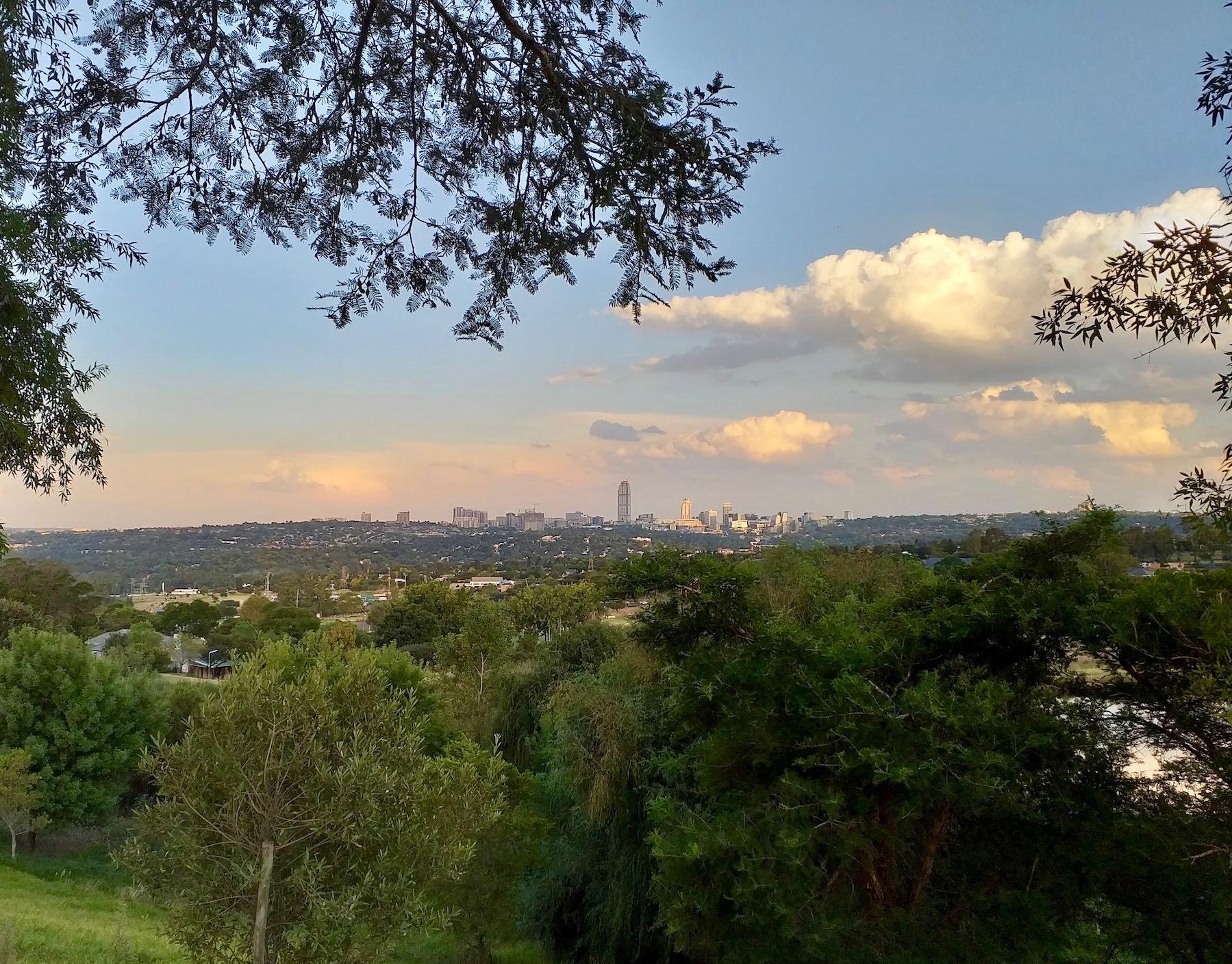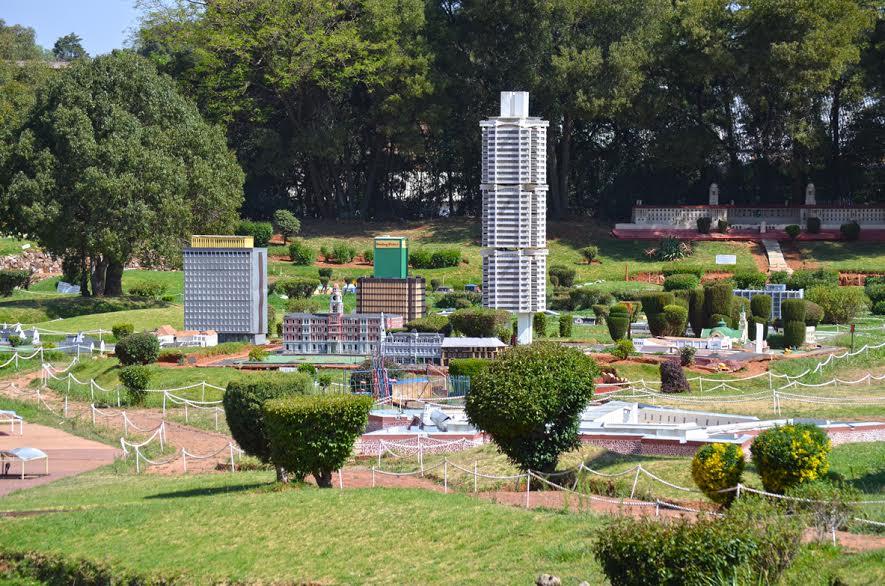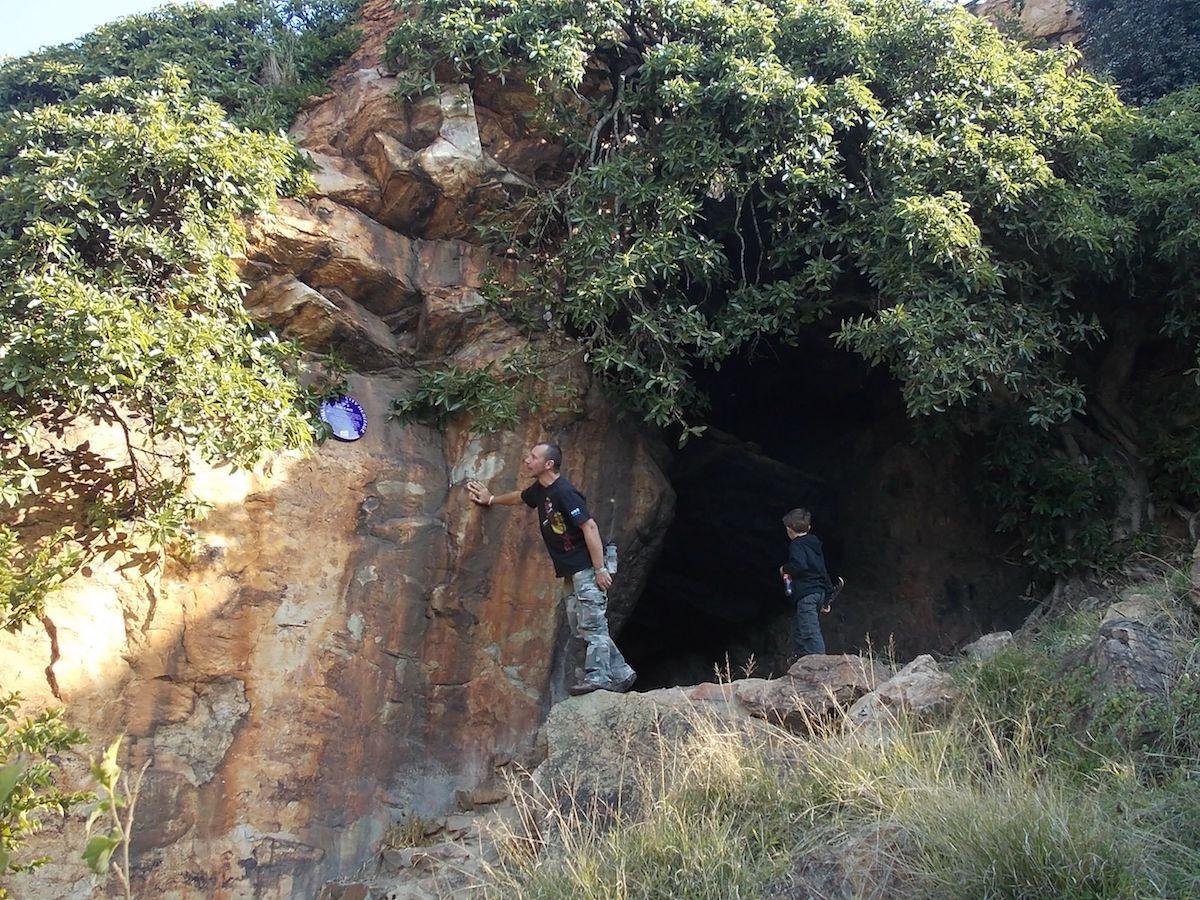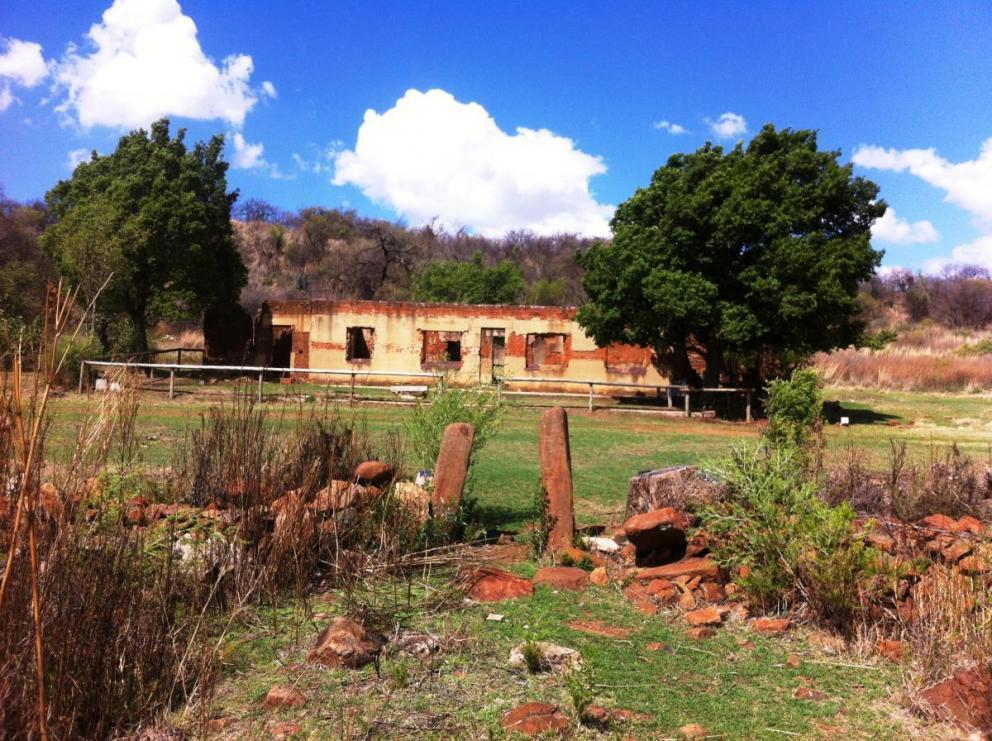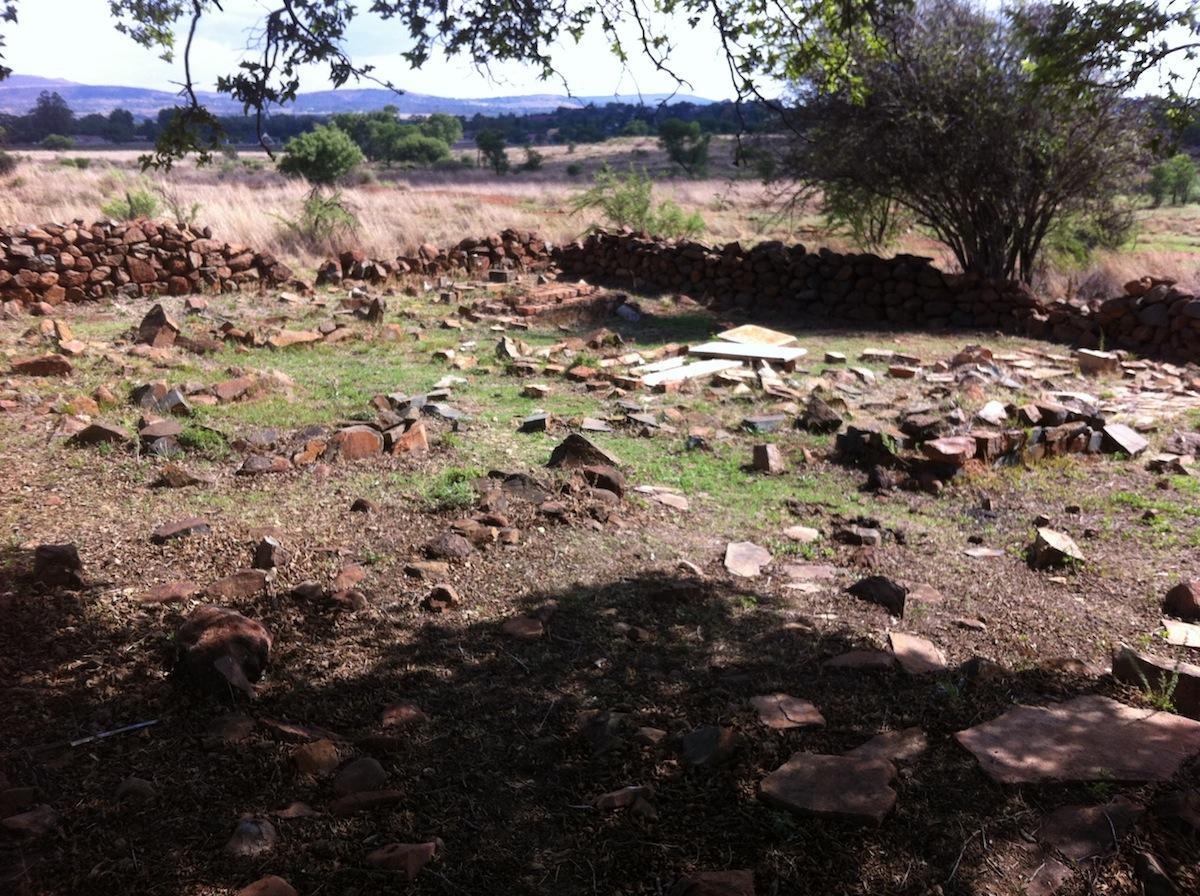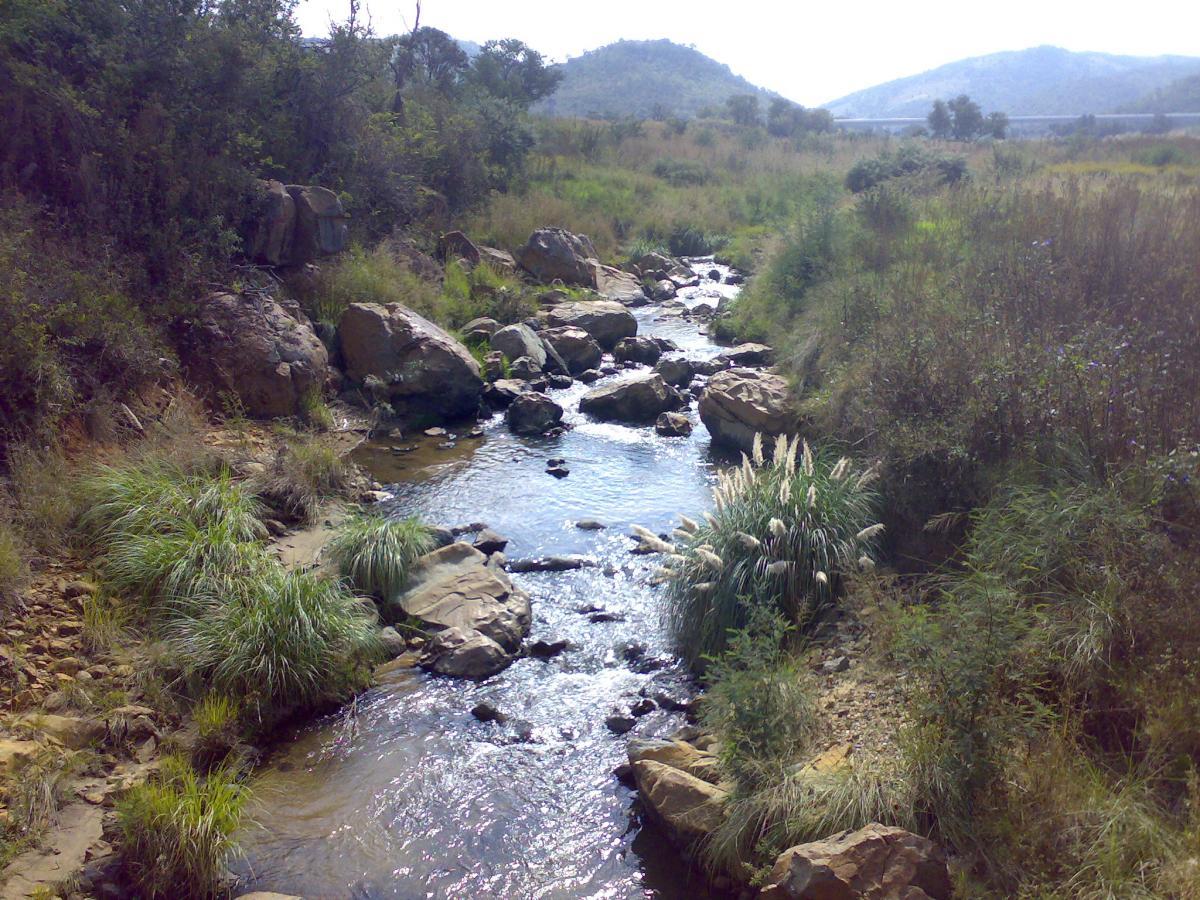
Disclaimer: Any views expressed by individuals and organisations are their own and do not in any way represent the views of The Heritage Portal. If you find any mistakes or historical inaccuracies, please contact the editor.
In the article below, journalist Lucille Davie explores the many historical layers of the Klipriviersberg Nature Reserve. The piece was first published on the City of Johannesburg's website on 8 April 2002. Click here to view more of her work.
It's Johannesburg's best-kept, back-to-nature secret: just 11 kilometres south of the city centre is an unspoilt 680-hectare stretch of open veld and koppies, bursting with 150 species of birds, and around 650 indigenous plants and trees, with the pleasant Bloubosspruit flowing idly through it.
The Klipriviersberg Nature Reserve offers a network of trails, with guided walks and rambles up to nine kilometres long.
The Reserve has an interesting history. In 1895 it was decided that the northern end of the Reserve could be walled to form a dam to supply the needs of the rapidly growing town.
The foundations of the dam wall - large stacked quartzite blocks are still visible, and the river flows through the middle of the wall, down into the Reserve and out the other end, into the Klip River.
But four years later, in 1899, the Anglo Boer War broke out and the plans were permanently shelved.
The dam, referred to as the Vierfontein Dam Scheme, was to have had walls of 12 metres high, in line with the koppies on either side of the valley. Around £70 000 was spent on the dam before it was abandoned. The huge Vaal Dam, another 50 kilometres south, supplies Johannesburg with water, augmented by water from neighbouring Lesotho.
Vaal Dam (Lennie Gouws)
If the dam had been built, the suburbs of Mondeor, Alan Manor, Suideroord and Winchester Hills Ext 1 would not have existed.
The Bloubospruit is fed by four feeder streams found in the koppies in the surrounding suburbs above the Reserve.
There has, for some time, been a clear divide between the northern and southern suburbs of Johannesburg. When the city centre experienced a decline in the early 1990s, businesses moved into the northern suburbs to areas like Sandton. The southern suburbs experienced a slump in development, epitomised in the decline in the use of recreation facilities like Wemmer Pan and the miniature town feature, Santarama Miniland, in La Rochelle.
Sandton Skyline (The Heritage Portal)
Santarama (Carlo Kaminski)
Early history
The Klipriviersberge - stone river mountains - have a long history. Stone Age artefacts dating back 250 000 years have been found in the reserve, but no living sites have been found, suggesting that Stone Age peoples hunted in the reserve but didn't settle there.
Aerial photographs of the Reserve reveal 19 stone-walled Iron Age settlements dating from about 1500. A total of 90 sites have been identified in the broader area, suggesting a large, settled pastoral community.
These Tswana peoples lived on the koppies, building stone walls to surround their inner kraals and living areas, shaped rather like a sunflower. Cattle, their most important commodity, were housed in the inner circle, safe from predators. Each petal of the sunflower housed a different household, and between these enclosures were smaller enclosures housing smaller animals like calves, goats and chickens.
The outer walls reached around 1.5 metres in height, but over the years those walls have crumbled.
Excavations of nearby sites reveal that these people grew sorghum, raised cattle, sheep and goats, and hunted wild animals. Two sites in the Reserve were large - 150 metres by 50 metres - and would have housed up to 100 people in a single settlement, made up of 10 households.
These early settlements were vulnerable to changes in climate, and population size would have waned and revived over the years. The earlier settlements died out, and it was only in the 1700s that these groups re-established themselves in the Reserve.
These pastoralists traded with settlements at Melville Koppies, 25 kilometres to the north, who mined iron, not found down south. These communities lived harmoniously but were overrun and wiped out in the early 1800s when ousted Zulu leader Mzilikazi moved into the area from present-day KwaZulu-Natal, and established his kingdom.
Melville Koppies Cave (The Heritage Portal)
Voortrekker farm
Around 1850, Sarel Marais, one of the early Voortrekkers, and his family settled just above the Bloubosspruit, in the southern part of the Reserve. He built five elements of what characterised a typical 1850s farmstead: a farmhouse, a waenhuis or wagonhouse, an orchard, an irrigation furrow and a cemetery.
The simple rectangular farmhouse had a thatched roof, but a 1943 fire destroyed the roof, and it was replaced with corrugated iron. Another fire in mid-1980 destroyed most of the farmhouse, and now only the walls remain.
Marais Homestead (Calvin Montgomery)
The single remaining wall of the wagonhouse provides an excellent example of pise-de-tere building technique: a 1.5 metre stone section with no mud cement, topped with a one metre mud brick section. The roof timbers consisted of right-angled yellow wood beams, combined with round poplar poles and held together with wooden pegs.
The orchard was established with peach, pear, fig and pomegranate trees, still visible in 1989 but now gone. The orchard was irrigated from the river by means of a wier and sluice gates. The low stone wall and two entrance stones marking the orchard are still evident.
It is believed that Marais also planted a vineyard but it no longer exists. The peaches were used for making Witblitz, a local schnapps, and the poplars that were planted were used for building and fences.
The family cemetery still exists, some 500 metres north of the house, now overgrown and vandalised. Marais's grave is in the cemetery. He died in 1897, aged 83.
Family cemetery (Calvin Montgomery)
A diary from the time indicates that lion, caracal, lynx and genet were found on the farm. Mountain rhebuck, duiker, jackal, mongoose, porcupine and dassie now live in the Reserve.
Marais' son Jakob took over the farm when his father died, but since Jakob had no sons (he had 10 daughters from two marriages), he sold the farm in 1917 to the Quilliam family. They developed the farm, successfully farming dairy, with several thousand pigs, lucerne, barley, and mielies. [If anyone has details of the farm please email admin@theheritageportal.co.za].
Myrtle Coward, a second-generation Quilliam family member who grew up on the farm, describes her childhood as "absolutely wonderful". The orchard just below the farmhouse was flourishing in the 1930s. Lilian Thompson, Myrtle's sister, says: "fruits of every letter of the alphabet were grown in the orchard".
The City Council bought the farm around 1950, after most of the Quilliam family had left and grandfather Quilliam had died. His wife remained on the farm until it became unsafe for her to stay. Since she moved out in the mid-1980s, the farmhouse has burnt down and been vandalised, and all that remains are the walls.
Malcolm Holman, committee member of the Klipriviersberg Nature Reserve Association, grew up in the area and used to walk past the farmhouse on his way to hiking in the koppies with his friends. "I remember that grandmother Quilliam used to dash inside when she saw us coming down the road, and come out with cookies and lemonade for us."
Reserve proclaimed
The Reserve was proclaimed in 1984. It has several access points: the one near the farmhouse is on Impala Drive; one through the Recreation Centre on Peggy Vera Road; and the most popular one, via Frandaph Drive in Mondeor, where the old dam wall is located.
The Reserve consists mostly of grassland, interspersed with indigenous shrubs and trees and rocky outcrops. It has a rich diversity of birdlife - 150 bird species have been spotted. More than 600 plant species have been identified, including more than 50 trees, together with a range of grasses.
One tree, the Buffalo Thorn, has several uses. "Its bark is used as a poultice for sprains," says Morne Brits, conservation consultant and Reserve Association member. It also has symbolic value, says Brits, in that the branches are cut and put on graves. There are paired thorns at the base of the leaves, the upward-pointing thorn symbolising the future, and the downward thorn referring to the ancestors.
Furthermore, it is felt that it is safe to shelter under the tree in a storm, as lightning won't strike the tree. The leaves can be made into a tea or stewed, for use as an aphrodisiac.
The Reserve is run by the Klipriviersberg Nature Reserve Association, with some 400 members, in conjunction with the Johannesburg City Council and Gauteng Nature Conservation. When a problem is identified, like pollution in the river or alien wattle trees growing next to the river, the Association organises a work party and the area is cleared.
Gauteng supplies a manager together with 20 workers, who work seven days a week on clearing alien shrubs and weeds, and cutting fire breaks.
The Reserve has a network of trails running through it, the two longest ranging from 5.8 kilometres to nine kilometres. Organised walks take place every second and fourth Sunday of the month.
Ecodad, an organisation specialising in environmental education, arranges a fun day on Environment Day in June. Visitors are given route maps, answering questions as they walk around the Reserve, and prizes are given.
Twice a year the Association organises Spring and Autumn days which consist of three-hour walks followed by a social braai (barbecue). Mountain biking and cross-country groups also enjoy the trails through the Reserve.
At present stables are being established by the River Rangers that will house horses to be used in horse trails as well as for security patrols around the Reserve.
Future plans
Long-term plans for the Reserve are to build a replica of a Tswana village, restore the homestead and fence the Reserve. The first stage of this plan, to build a demonstration hut, manned by Tswana people, has been approved, and it is hoped it will be ready for the World Summit on Sustainable Development, together with trained guides.
Further down the line there is a plan to build a bridge across the Bloubosspruit to allow visitors who start their walks from the Recreation Centre in the southern end of the Reserve, to cross the river in all seasons and move up into the koppies. Eventually it is hoped that a wheelchair-accessible trail will be created, in addition to easy-to-manage paths to cater for the very young and the very old.
More immediate plans are to protect plant species, in particular Cineraria longipes, a Red Data (most endangered) species, from destruction. Making the present trails more accessible, and in the process preventing further erosion, are also top priorities.
The Reserve is unfenced and is used by local residents to walk their dogs. It is used as a thoroughfare between Mondeor in the north and Kibler Park in the south. But, says, Brits, no incidents of vandalism of parked cars or mugging of people, have been reported.
Klipriviersberg Nature Reserve, little known to northern suburbs residents, gives visitors "a feel for unspoilt Africa", says Brits.
Perhaps those southerners are deliberately keeping it their secret.
Lucille Davie has for many years written about South Africa's people and places, as well as the country's history and heritage. Take a look at lucilledavie.co.za
Comments will load below. If for any reason none appear click here for some troubleshooting tips. If you would like to post a comment and need instructions click here.

